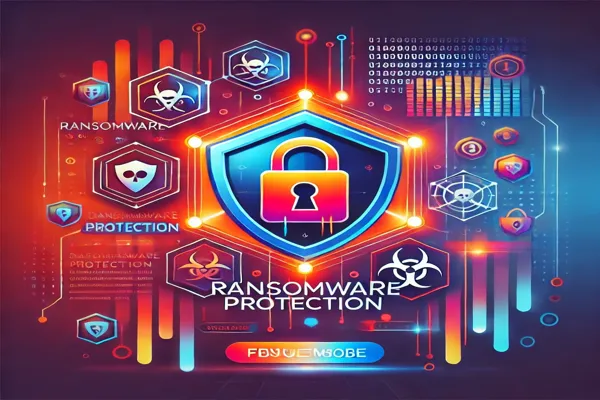
How to Protect Yourself and Minimize Ransomware Damage
Ransomware has emerged as a significant cybersecurity threat, affecting individuals and businesses alike. This malicious software can lock your files and demand payment for their release, leading to financial loss and data breaches. In this article, we will explore what ransomware is, how it works, and most importantly, how to protect yourself from it.
Understanding Ransomware
Ransomware is a form of malware that infiltrates your computer, encrypts your files, and then demands a ransom for their release. Victims are often left with little choice but to either pay the ransom or lose access to their critical data.
How Does Ransomware Work?
Ransomware commonly spreads through phishing emails, malicious attachments, or compromised websites. Once inside a system, it encrypts files using complex algorithms, rendering them inaccessible. The attacker then demands a ransom, usually in cryptocurrency, in exchange for a decryption key.
How Encryption Plays a Role
Encryption is a security measure used to protect data by converting it into an unreadable format. However, cybercriminals exploit this technology by using their own encryption to lock victims’ files. Decrypting these files without the attacker’s key is nearly impossible, making it essential to prevent infections in the first place.
Preventing Ransomware Attacks
The best way to deal with ransomware is to prevent it from affecting your system. Follow these crucial steps to stay protected:
1. Keep Your Software Updated
Ensure that your operating system, antivirus software, and other applications are regularly updated. Software updates often include security patches that fix vulnerabilities ransomware can exploit.
2. Use Reliable Antivirus Software
Install reputable antivirus and anti-malware programs to detect and block ransomware before it can execute. Keep these programs updated and run frequent scans.
3. Be Cautious with Emails
Cybercriminals often use phishing emails to spread ransomware. Avoid opening attachments or clicking on links from unknown sources. Verify sender details before downloading any files.
4. Regularly Back Up Your Data
Create frequent backups of your important files and store them in a secure location, such as an external hard drive or a cloud service. This way, even if your files are locked, you can restore them without paying a ransom.
What to Do If You’re a Victim of Ransomware
If ransomware infects your computer, follow these steps to mitigate the damage:
1. Disconnect from the Internet
Immediately disconnect your device from the network to prevent the malware from spreading to other systems.
2. Do Not Pay the Ransom
Paying the ransom does not guarantee that you will regain access to your files. Additionally, it funds cybercriminal activities, encouraging further attacks.
3. Report the Attack
Inform law enforcement agencies and cybersecurity authorities about the attack. They may be able to provide guidance or track down the perpetrators.
4. Restore from Backups
If you have backups, use them to recover your files after ensuring your system is completely free of malware.
Protecting Businesses from Ransomware
Businesses face even greater risks from ransomware attacks due to the potential for financial losses and data breaches. Here’s how organizations can enhance their security:
1. Educate Employees
Train employees to recognize phishing attempts and suspicious links. Cybersecurity awareness can significantly reduce the likelihood of ransomware infections.
2. Restrict Access to Critical Files
Limit file access to only those employees who need it. This minimizes the chances of ransomware spreading throughout the entire system.
3. Develop an Incident Response Plan
Prepare a comprehensive plan to handle ransomware attacks efficiently. Regularly test and update your security protocols to ensure readiness.
The Evolving Threat of Ransomware
Cybercriminals continuously develop new tactics to bypass security measures. Stay vigilant against these emerging threats:
1. Mobile Device Attacks
Ransomware is increasingly targeting smartphones and tablets, making mobile security just as important as computer security.
2. Double Extortion Techniques
Some ransomware variants not only encrypt files but also steal sensitive data. Attackers then threaten to release this data publicly if the ransom is not paid.
3. Cloud-Based Ransomware Attacks
As businesses shift to cloud storage, cybercriminals are targeting cloud services. Implement strong authentication measures and secure backups to mitigate risks.
Stay Secure and Prepared
Ransomware remains a formidable threat, but with proactive measures, you can protect yourself and your organization. Keep your systems updated, stay vigilant online, and always back up important data.
If you need expert guidance on ransomware protection or recovery, don’t hesitate to seek professional help. Reach out today.